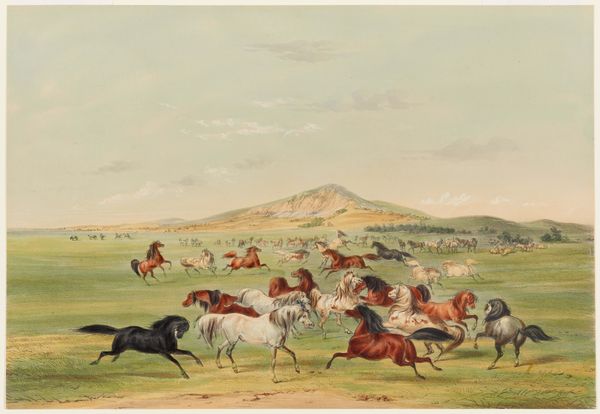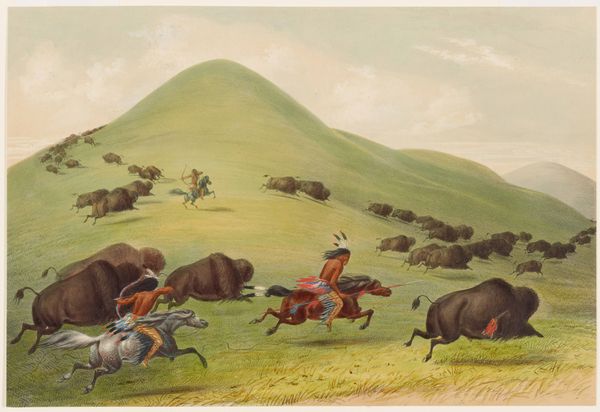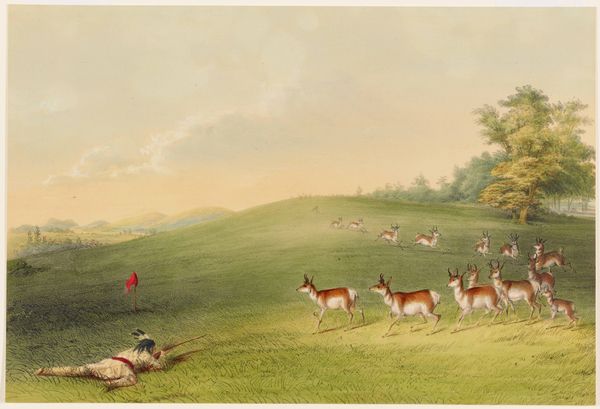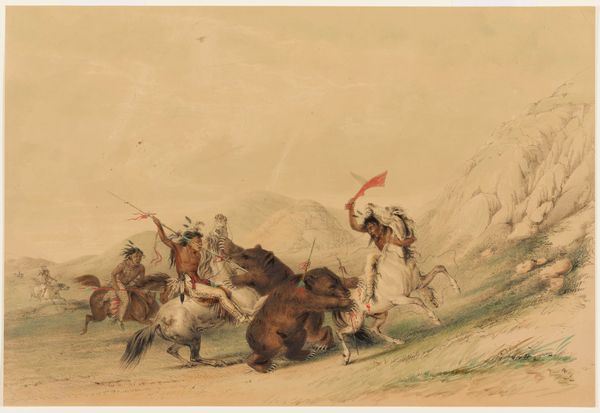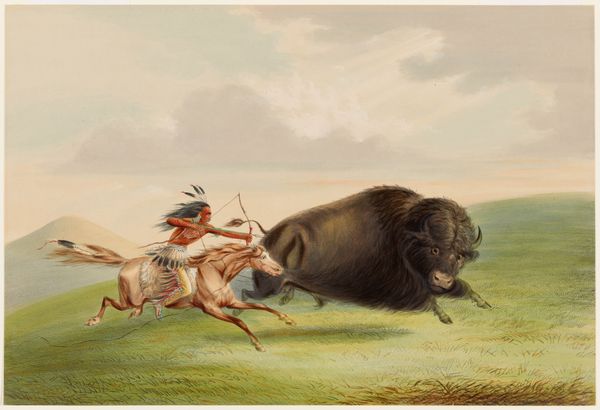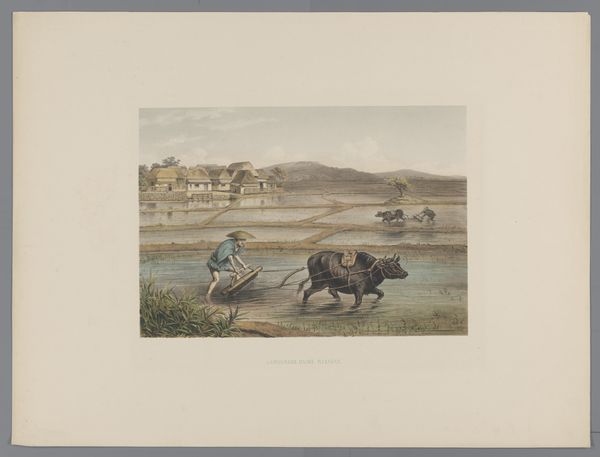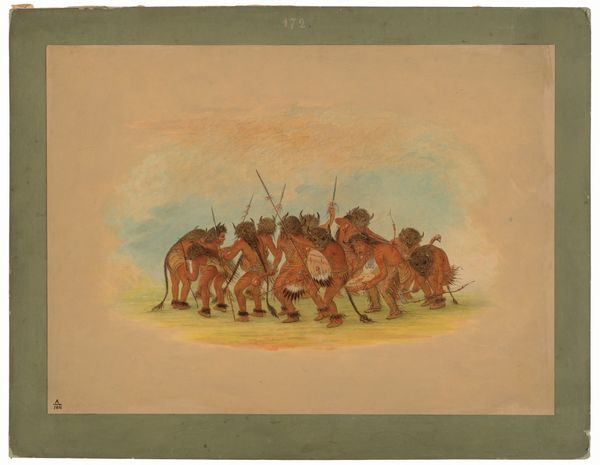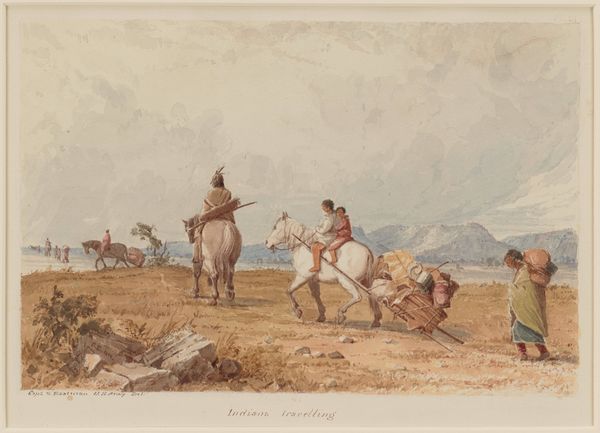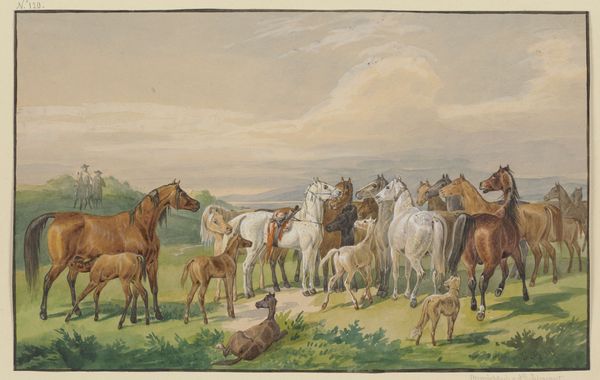
#
landscape
#
figuration
#
romanticism
#
watercolour illustration
#
watercolor
Dimensions: 12 1/8 x 17 15/16 in. (30.8 x 45.56 cm) (image, sheet)
Copyright: Public Domain
George Catlin made this watercolor painting, Catching the Wild Horse, during the 1830s while traveling through the American West. Catlin’s work provides insight into a period of intense cultural exchange and conflict on the Great Plains. Catlin, who self-identified as an ethnologist, traveled through Indigenous territories documenting the lives and customs of various tribes. While his intentions may have been to preserve a record of these cultures, his work was inevitably shaped by the prevailing attitudes of his time. The concept of Manifest Destiny, the belief that American settlers were destined to expand across the continent, deeply influenced how people perceived Indigenous people and their relationship to the land. To fully understand Catlin’s work, it is essential to consider the social and political context in which it was produced. Historical documents, tribal histories, and contemporary scholarship can offer valuable insights into the complexities of this period. By examining these resources, we can develop a more nuanced understanding of Catlin’s art and its place in American history.
Comments
minneapolisinstituteofart almost 2 years ago
⋮
During the 1830s, George Catlin traversed the Great Plains to record the appearance and customs of Native people. He was among the first artists of European descent to travel widely in the Midwest and West, spending eight years chronicling scenes of daily life among the 48 indigenous tribes he encountered. In 1844, with the intention of honoring and preserving Native culture in the face of growing oppression by the U.S. government and military, Catlin published a series of 25 hand-colored lithographs based on his sketches and paintings. Though he romanticized many of his subjects, the prints in North American Indian Collection provide a glimpse of Native culture on the U.S. frontier in the 1830s.
Join the conversation
Join millions of artists and users on Artera today and experience the ultimate creative platform.

